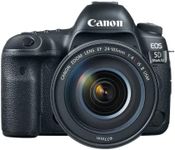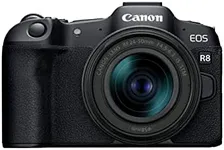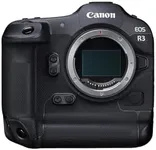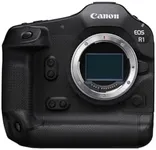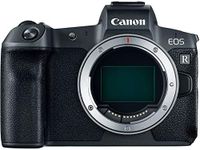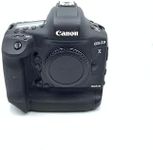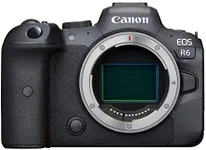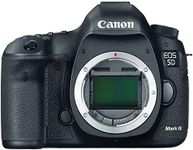Buying Guide for the Best Canon Full Frame Cameras
Choosing the right Canon full-frame camera can be a rewarding experience, especially if you understand the key specifications that matter most. Full-frame cameras are known for their larger sensors, which can capture more detail and perform better in low light compared to crop sensor cameras. When selecting a Canon full-frame camera, consider your specific needs, such as the type of photography you enjoy, your experience level, and how you plan to use the camera. Here are some key specifications to help guide your decision.Sensor ResolutionSensor resolution, measured in megapixels (MP), indicates the amount of detail a camera can capture. Higher resolution means more detail, which is beneficial for large prints or cropping images without losing quality. For general photography, a resolution between 20-30 MP is usually sufficient. If you are into professional photography or need extremely detailed images, consider cameras with 30 MP or higher. However, higher resolution can also mean larger file sizes, so ensure your storage solutions can handle it.
ISO RangeThe ISO range of a camera determines its sensitivity to light. A wider ISO range allows for better performance in low-light conditions. For most users, an ISO range of 100-3200 is adequate for everyday photography. If you frequently shoot in low-light environments or need to capture fast-moving subjects in dim conditions, look for cameras with an extended ISO range, such as 100-25600 or higher. Keep in mind that higher ISO settings can introduce noise, so balance your need for sensitivity with image quality.
Autofocus SystemThe autofocus (AF) system is crucial for capturing sharp images, especially in fast-paced or dynamic situations. Canon full-frame cameras come with various AF points and technologies. For casual photography, a basic AF system with fewer points may suffice. However, for sports, wildlife, or action photography, look for cameras with advanced AF systems featuring numerous AF points and sophisticated tracking capabilities. This ensures you can quickly and accurately focus on moving subjects.
Frame RateFrame rate, measured in frames per second (fps), indicates how many images a camera can capture in one second. A higher frame rate is beneficial for action, sports, and wildlife photography, where capturing multiple frames in quick succession is essential. For general use, a frame rate of 5-7 fps is usually adequate. If you need to capture fast-moving subjects, consider cameras with higher frame rates, such as 10 fps or more, to ensure you don't miss critical moments.
Video CapabilitiesIf you plan to shoot videos, consider the camera's video capabilities. Look for features like 4K resolution, frame rates, and video-specific settings. For casual video recording, Full HD (1080p) at 30 fps is typically sufficient. For more professional video work, 4K resolution at 30 fps or higher is preferable. Additionally, check for features like microphone and headphone jacks, which are important for high-quality audio recording and monitoring.
Build Quality and Weather SealingBuild quality and weather sealing are important if you plan to use your camera in challenging environments. A robust, weather-sealed body can withstand dust, moisture, and rough handling, making it ideal for outdoor and travel photography. If you primarily shoot indoors or in controlled environments, these features may be less critical. However, for those who frequently shoot in unpredictable conditions, investing in a camera with strong build quality and weather sealing is advisable.
Connectivity OptionsConnectivity options, such as Wi-Fi, Bluetooth, and NFC, allow you to easily transfer images and control your camera remotely. These features are convenient for sharing photos on social media, backing up images, or using a smartphone as a remote control. If you value seamless connectivity, look for cameras with built-in wireless features. For those who prefer traditional methods, ensure the camera has sufficient ports for wired connections and data transfer.
Battery LifeBattery life is an important consideration, especially for long shooting sessions or travel. A camera with longer battery life means fewer interruptions and less need to carry spare batteries. For casual use, a battery life of around 300-500 shots per charge is usually sufficient. If you plan to shoot extensively or in remote locations, look for cameras with higher battery capacities or consider carrying extra batteries to ensure you don't run out of power.



